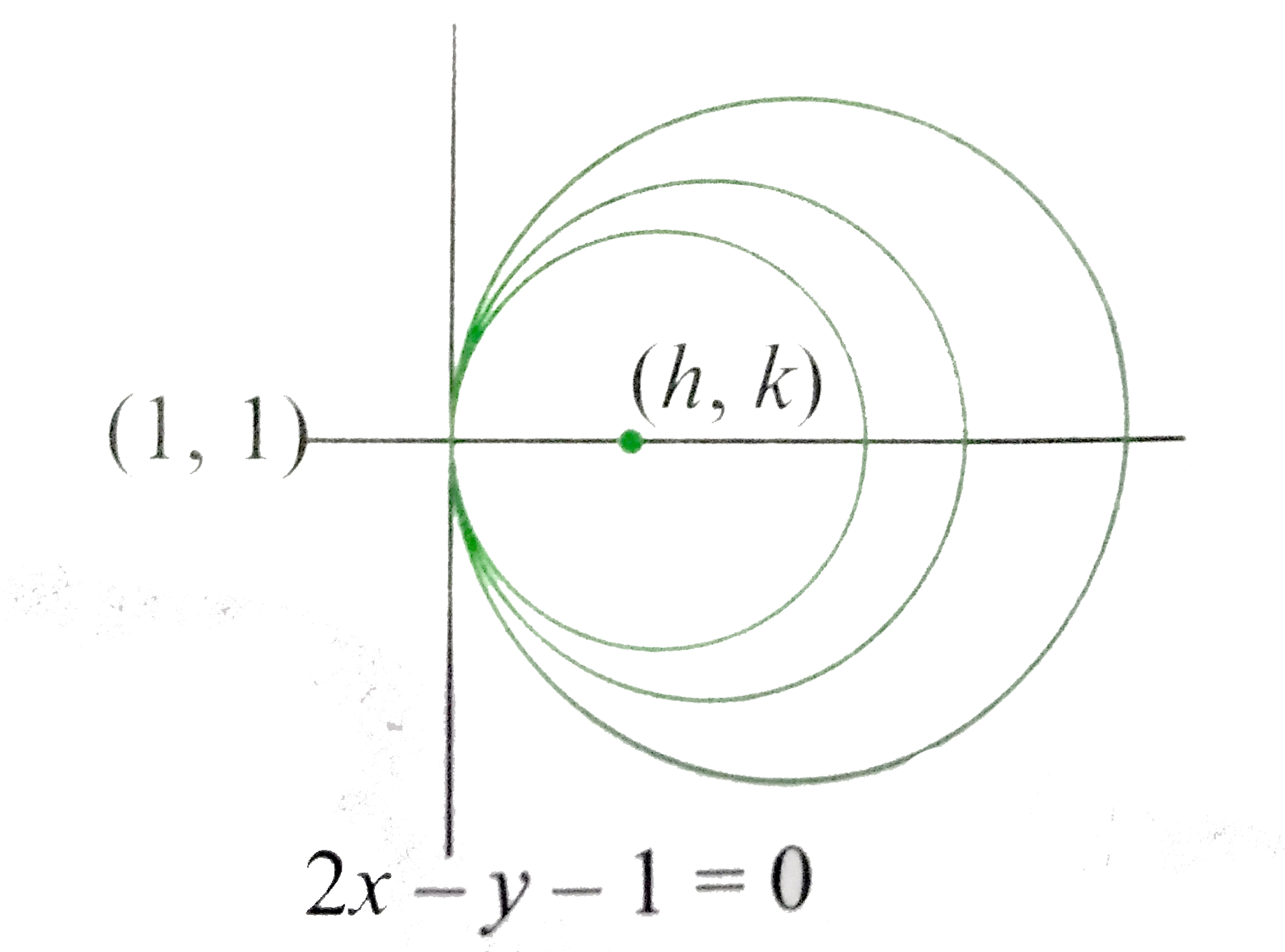Find the equation of the circle which touch the line 2x-y=1 at (1,1) and line 2x+y=4
x+3y=2
x+2y=3
x+y=2
none of these
The correct Answer is:2

Obviously , the locus of the center is a line perpendicular to the given line.
Hence, the locus is
k−1h−1=−12or x+2y=3
Topper's Solved these Questions
- CIRCLE BOOK - CENGAGE PUBLICATIONCHAPTER - CIRCLE EXERCISE - Multiple Correct Anser Type
29 Videos
- CIRCLE BOOK - CENGAGE PUBLICATIONCHAPTER - CIRCLE EXERCISE - Linked Comprehension Type (For Problem 1-3)
3 Videos
- CIRCLE BOOK - CENGAGE PUBLICATIONCHAPTER - CIRCLE EXERCISE - CONCEPT APPLICATION EXERCISE 4.17
2 Videos
- BINOMIAL THEOREMBOOK - CENGAGE PUBLICATIONCHAPTER - BINOMIAL THEOREMEXERCISE - Comprehension
11 Videos
- CIRCLESBOOK - CENGAGE PUBLICATIONCHAPTER - CIRCLESEXERCISE - Comprehension Type
8 Videos
Similar Questions
Knowledge Check
The equation of a circle which touches the line y = x at (1 , 1) and having y = x -3 as a normal, is
A4x2+4y2−20x+4y+8=0Bx2+y2−2x+4y+8=0Cx2+y2−10x−4y+8=0Dnone of these
Find the equation of the circle which touches the lines 4x−3y+10=0and4x−3y−30=0 and whose centre lies on the line 2x+y=0.
View SolutionFind the equation of the circle with centre on the line 2x + y = 0 and touching the line 4x−3y+10=0,4x−3y=30 .
View SolutionFind the equation of the circle with centre on the line 2x + y = 0 and touching the line 4x−3y+10−0,4x−3y=30 .
View SolutionThe locus of the centre of the circle touching the line 2x−y=1 at (1, 1) and also touching the line x+2y=1 is : (A) x+3y=2 (B) x+2y=3 (C) x+y=2 (D) none of these
View SolutionThe locus of the centre of the circle touching the line 2x−y=1 at (1, 1) and also touching the line x+2y=1 is : (A) x+3y=2 (B) x+2y=3 (C) x+y=2 (D) none of these
View SolutionFind the equation of circle touching the line 2x+3y+1=0 at the point ( 1,-1) and is orthogonal to the circle which has the line segment having end poitns (0,-1) and (-2,3) as the diameter.
View SolutionFind the equation of circle touching the line 2x+3y+1=0 at the point ( 1,-1) and is orthogonal to the circle which has the line segment having end poitns (0,-1) and (-2,3) as the diameter.
View Solution
